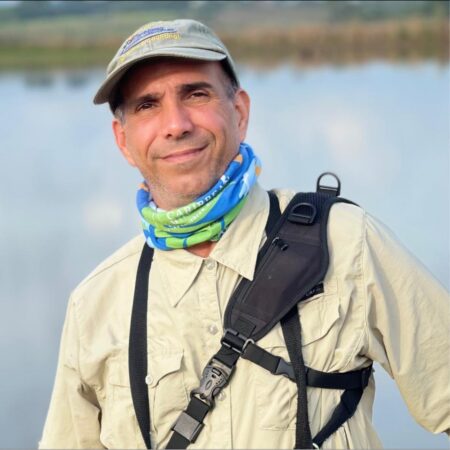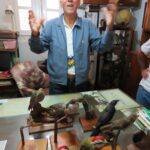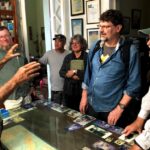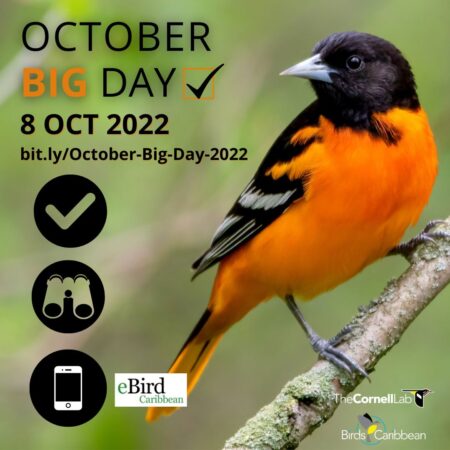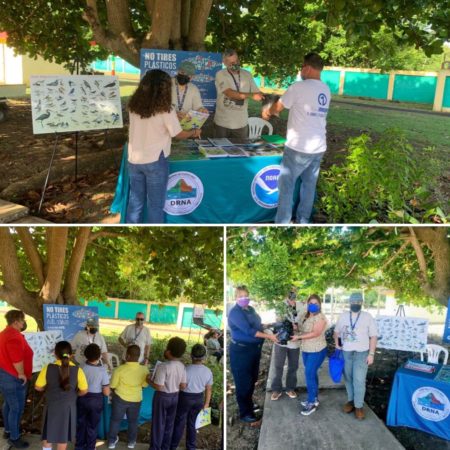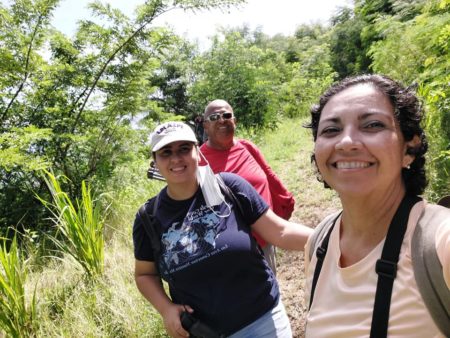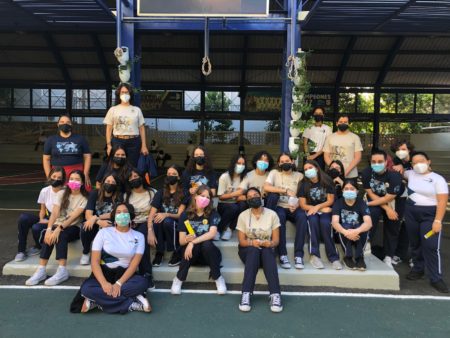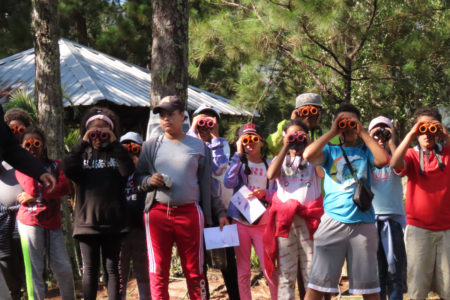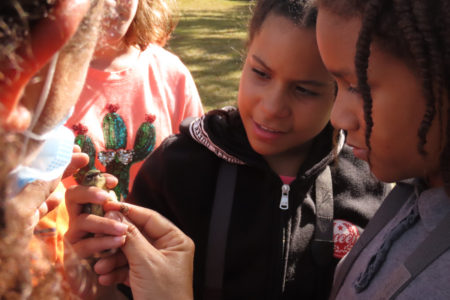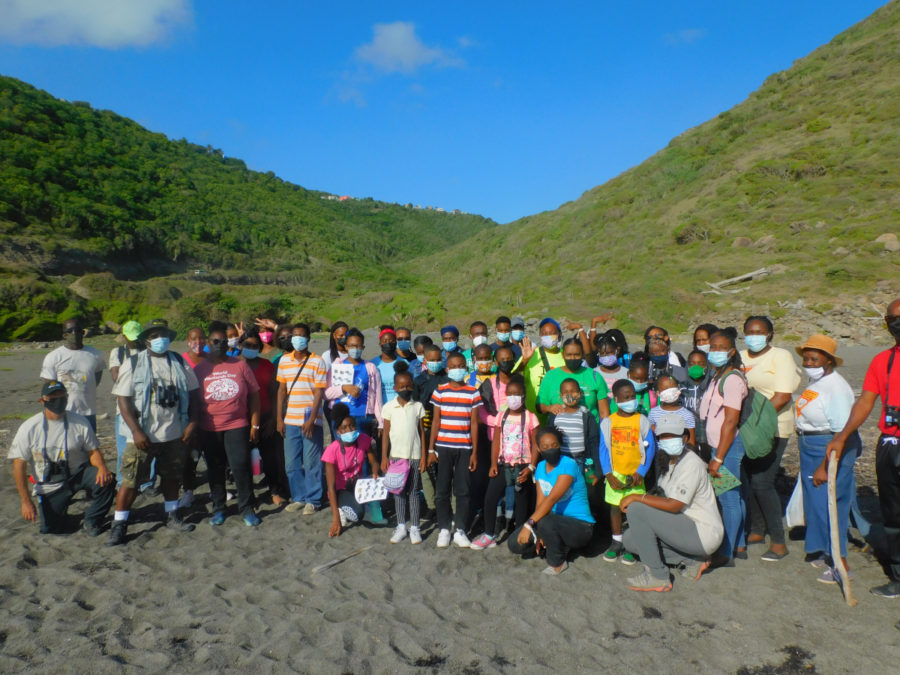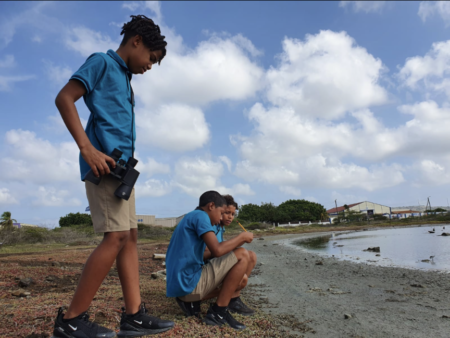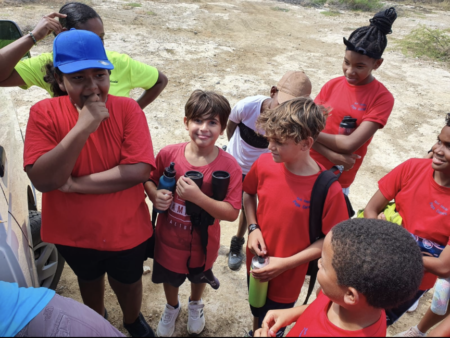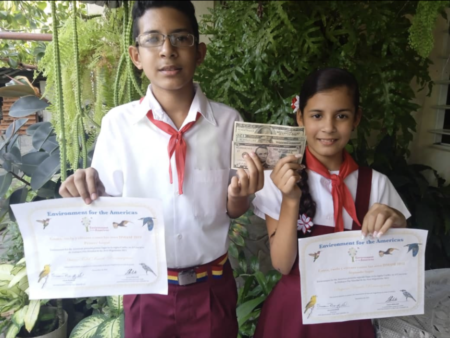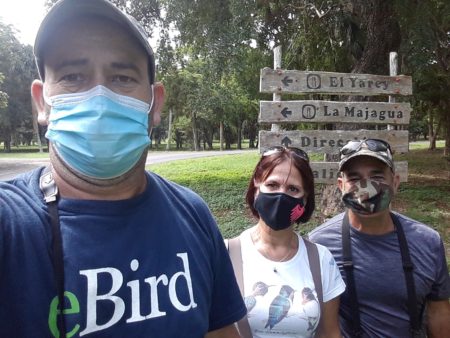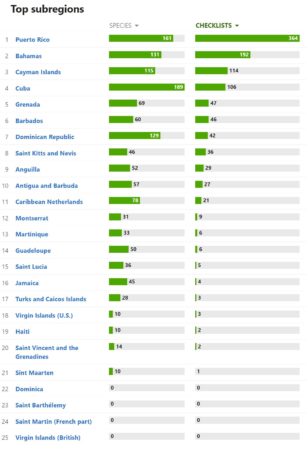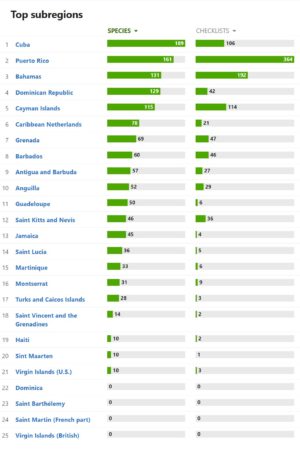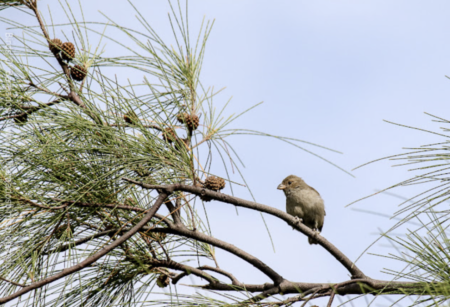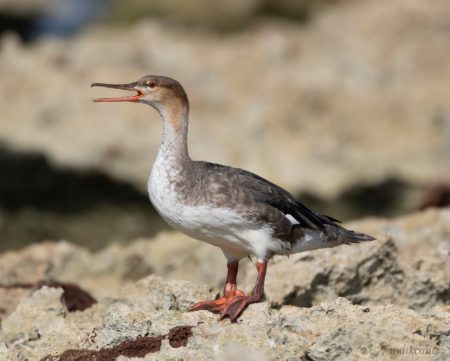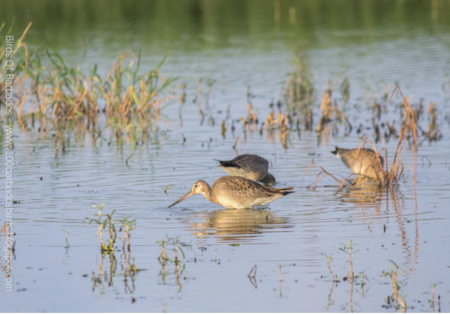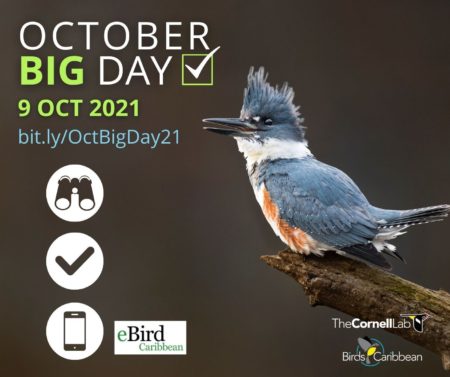For birdwatchers in Cuba, October isn’t just a month; it’s a celebration of nature, science, and the unbeatable spirit of the birdwatching community. Despite the blackouts and shortages of essential items that come with life on the largest island in the Caribbean, birders across the country united for two magnificent birding extravaganzas—October Big Day and Garrido Biggest Week.
In 2023, Cuban conservationists Yaro Rodríguez and Nils Navarro received a Betty Petersen Conservation Fund grant to expand Cuba’s emerging birdwatching movement. The goal was to improve the understanding of Cuba’s birdlife through citizen science.
Their project provided community leaders with binoculars and training to identify and monitor local bird populations and report data through eBird Caribbean. These trained leaders then establish birdwatching clubs in their communities, raising awareness across Cuba about the importance of protecting birds and their habitats. Yaro and Nils’ project continues to grow, with birdwatching clubs across the country now actively engaging in ongoing bird monitoring and conservation efforts.
In addition to several locally initiated birding celebrations throughout the year, birders across the island also participate in two major global citizen science programs: Global Big Day in May and October Big Day in October. Team Cuba is proudly known as the Gundlach Team, in honor of the German-Cuban naturalist and taxonomist Johannes Christoph Gundlach. Yaro details the how the Cuban birding community came together in October to celebrate and protect Cuba’s incredible birdlife.
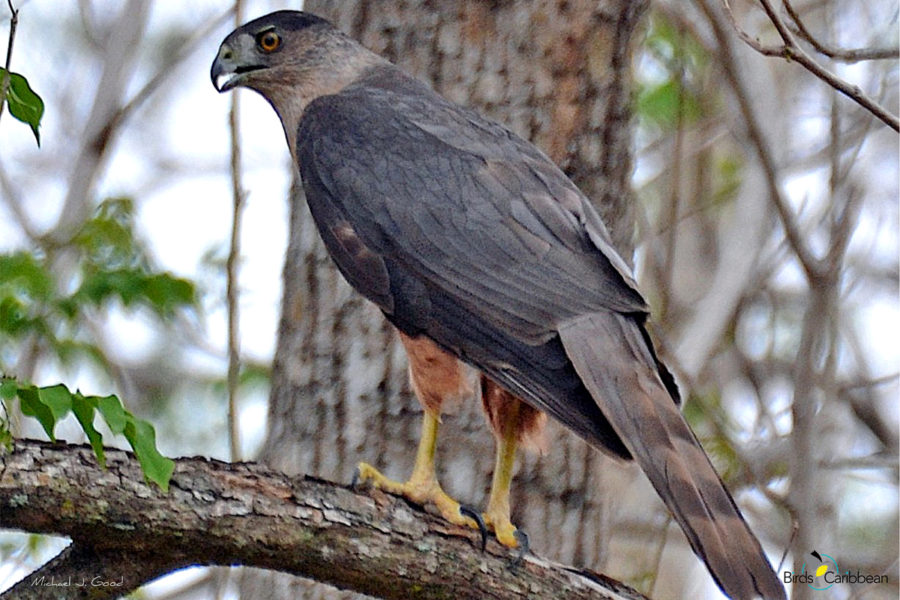
Passion and perseverance in Cuba’s birdwatching community
October saw the Gundlach Team remaining steadfast in their exemplary efforts. From dawn onward, birdwatchers from across Cuba ventured into the field, ready to discover and record the country’s rich avian diversity. Notable participants included Yanosky, Manuel Aroche, Ricardo Concepción, Nicolás Díaz, and Marleny Roque, who started their day at first light!
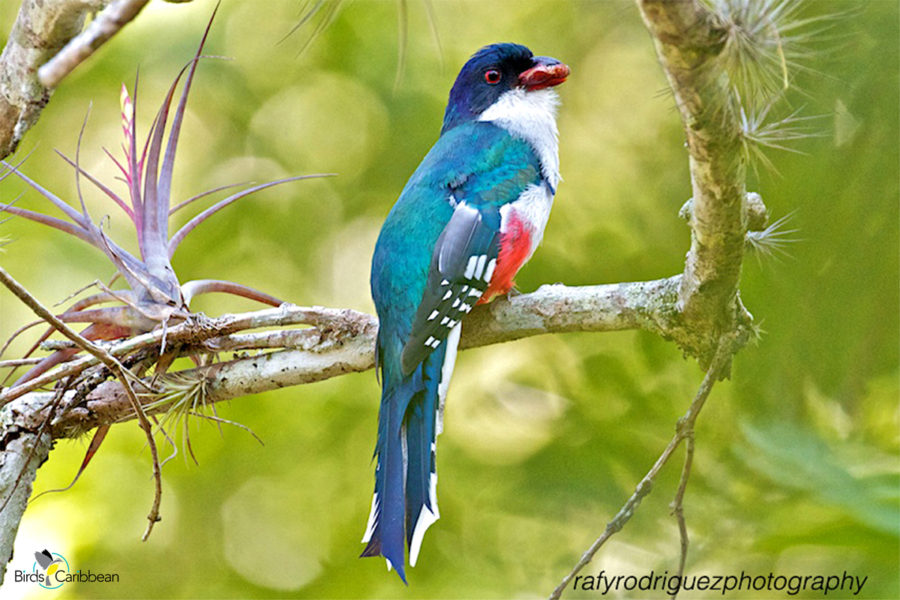
What makes these events special is not only the number of birds recorded—but the personal stories behind each effort. For some, it was a day of surprises as they encountered new “lifers” to add to their personal lists, while for others, it was an opportunity to improve their standing in the Cuba Big Year 2024. Every list submitted to eBird helped to build a more comprehensive picture of the biodiversity on our island.
The community’s dedication was particularly inspiring. Birdwatchers like Edwin Ruiz and Maite Cordoví, despite facing personal challenges, joined in from their windows, showing that a love for birds knows no bounds. Others, like Homar Labrada and his son Marcos, used the occasion to spend the day together, passing down a respect and fascination for birds to the next generation.
Against the odds: The Cuban reality
Birdwatching in Cuba presents unique challenges. One of the biggest challenge our birdwatching community faces is transportation, both to easily accessible areas and to new regions we want to explore. Compounded by fuel shortages, this significantly limits our ability to travel, making each trip a major logistical challenge. On top of that, we deal with frequent power outages and the ongoing stress of meeting our families’ basic needs. Despite these daily struggles and economic difficulties affecting everything from transportation to food, our birdwatching community remains determined, active, and enthusiastic.
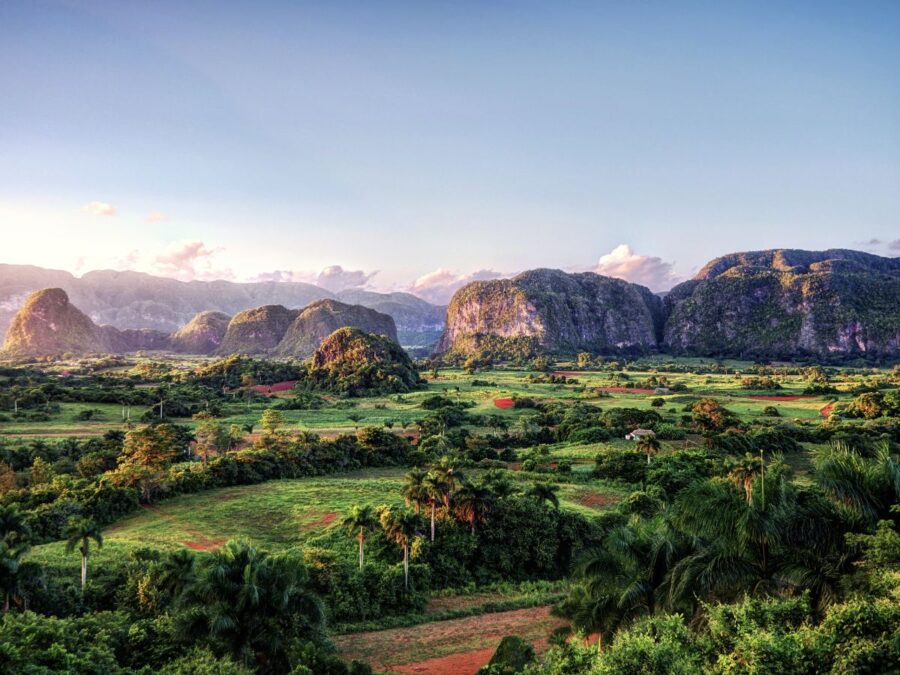
Every activity we promote and every event in which birdwatchers participate is a meaningful achievement, reflecting the love and commitment we have for Cuban birds and future generations.
October Big Day in Cuba: An unmatched success
On October 12, 63 eBirders, across 15 provinces, with the exception of the Isle of Youth, recorded 186 bird species within just 24 hours. This resulted in 140 eBird checklists, enriched with 96 photos and 31 song recordings. These data not only strengthen the global knowledge base on birds but also underscore Cuba’s commitment to conservation and citizen science.
Among notable individual achievements, Manuel López Salcedo from Las Tunas led the count with 96 species observed across 11 lists. On the women’s side, Yuzaima Ortiz from Ciego de Ávila secured the title of top female lister with a total of 87 species observed.
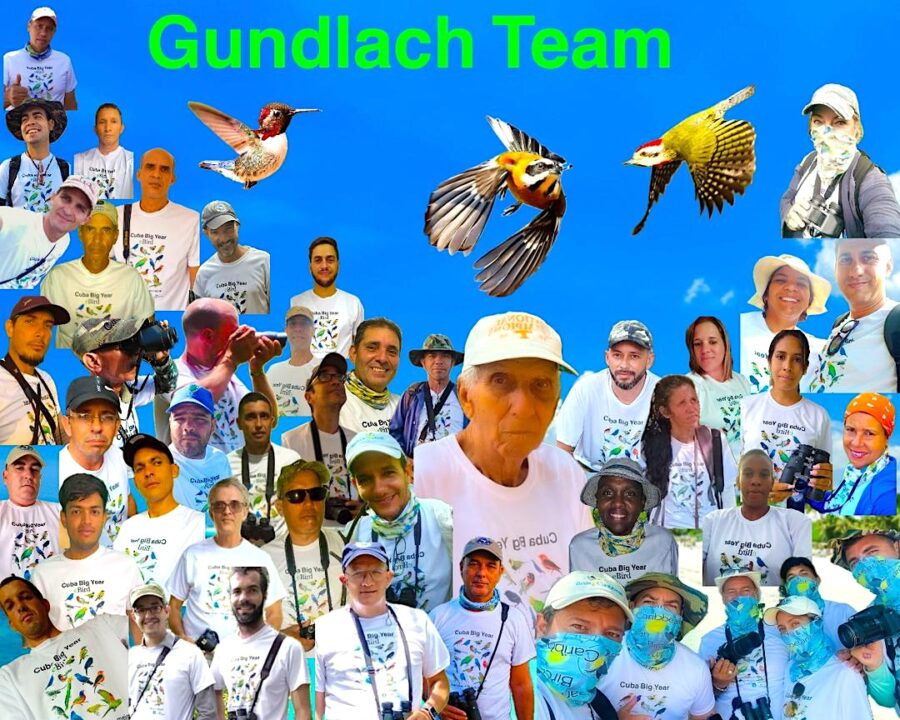
This local success was part of a larger global achievement. Over 750,000 birdwatchers from 201 countries participated in this historic day of citizen science, documenting over 7,800 species in just 24 hours. This global initiative highlights the importance of birdwatching as a conservation tool. Each checklist, photo, and recording contributes essential data for science and biodiversity protection.
Garrido Biggest Week: A tribute to a legend
Despite the devastation caused by Hurricane Oscar and ongoing power outages, the Cuban birdwatching community honored Orlando H. Garrido, the country’s most influential ornithologist, who passed away in June 2024. In a fitting tribute to Cuba’s jewel of Caribbean ornithology, the first edition of Garrido’s Biggest Week was held from October 21 to 27. Created to honor Garrido’s legacy and encourage birdwatching during the autumn migration, the event coincided with the dates when Garrido himself would go into the field to record new species.

Birdwatchers from all provinces participated enthusiastically, recording 183 species and capturing a total of 76 photographs. José Alberto Pérez Echavarría was the winner in this friendly competition, observing 108 species throughout the event.
This week featured some serendipitous sightings, among them was the first record in Cuba of a Lawrence’s Warbler, an important discovery for the island’s avifauna!
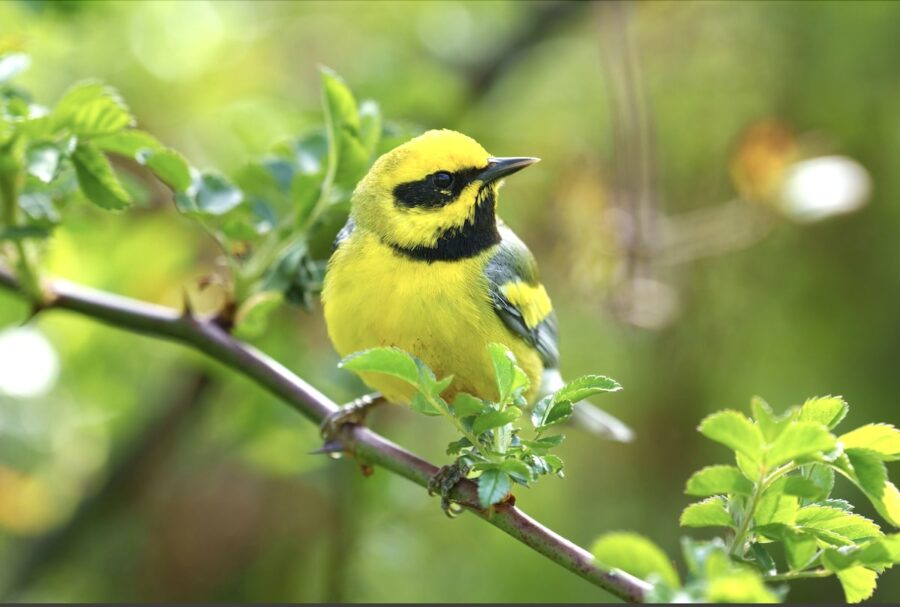
Additionally, the first documented case of xanthochroism in a member of the Todidae family, the Cuban Tody, was observed—this rare phenomenon gives affected birds an unusual yellow coloration. Both discoveries will be part of an upcoming article, expanding on these unique observations in the region.
The Garrido Biggest Week will become an annual tradition. The community also organizes other thematic weeks to honor prominent figures in Cuban ornithology, such as Charles Ramsden Week in December, José H. Bauzá Week in April, and Juan Gundlach Week in August.
These activities are essential for keeping the birdwatching community active year-round, beyond major events like October Big Day and Global Big Day, while also enriching eBird during periods of lower tourist activity in the country. Through these efforts, the Cuban birdwatching community continues to advance the exploration and conservation of the island’s biodiversity, even in the face of adversity.
The power of citizen science
October Big Day and Garrido Biggest Week are also reminders of the value of our birds and the challenges they face. Cuban birdlife, like that around the world, faces constant pressures from habitat loss, climate change, and human activity. In addition, illegal trapping is a huge threat to endemic, resident and migratory birds in Cuba. Through citizen science and unwavering commitment, each Cuban birdwatcher has the opportunity to contribute to conservation and make a difference.
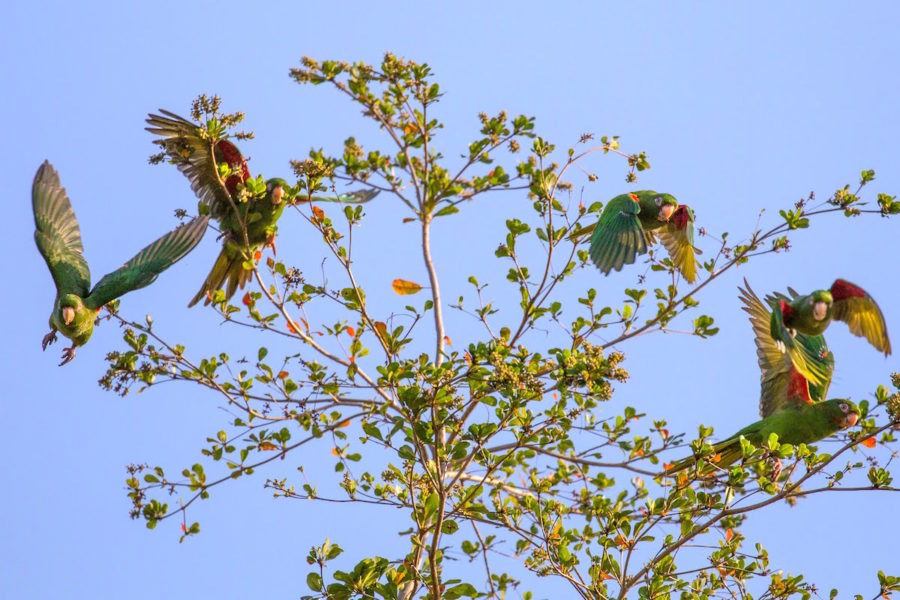
Cuban voices from the field
To conclude, here are some stories that capture the passion and challenges of these unforgettable days:
“When I arrived, the battery pack I’d prepared for my camera failed, so I used my binoculars to do digiscoping and identify birds in tricky situations. Later, in the forest, as we returned to the reservoir embankment, Wency played a mix of bird calls, and we saw several warbler species. Surprise! Among them was a Worm-eating Warbler, a lifer for me. The excitement was indescribable; everyone pointed their cameras and managed to capture the moment.” – Freddy Ricardo, Holguín Birdwatching Club
“I had a lifer: White-eyed Vireo, though without a photo. But I managed to photograph an Osprey for the first time—81 shots as I got closer with digiscoping! I was thrilled to capture this species.” – Manuel Aroche, Granma Birdwatching Club
“A friend and I shared a lifer, a Philadelphia Vireo! The second record of this species in Ciego de Ávila, and during the week we honor Garrido! It couldn’t be better.” – Nicolás Díaz, Ciego de Ávila Birdwatching Club
“I want to dedicate my participation in the October Global Big Day to my dad, who recently passed away. I owe him my love and respect for nature.” – Ricardo Sánchez, Artemisa Birdwatching Club
These anecdotes reflect the dedication and love for birds that motivate our community to keep moving forward. In every field outing, every photo, and every checklist submitted, there lies a collective commitment to preserving Cuba’s rich biodiversity for future generations.
Special Thanks
We would like to extend our heartfelt gratitude to the Betty Petersen Conservation Fund, managed by BirdsCaribbean, for their generous support, and to the team at BirdsCaribbean, especially Lisa Sorenson and Adrianne Tossas, for their unwavering dedication to the birdwatching community in Cuba.
Yaroddys Rodríguez, known as Yaro, is a self-taught ornithologist dedicated to the study and conservation of Cuban birds. Mentored by experts like Orlando H. Garrido and James Wiley, he began publishing scientific articles at a young age. Yaro founded the Cuban Birdwatchers Facebook group, now with over 30,000 members, and promotes the use of eBird for citizen science. He is also a member of the Cuban Zoological Society, BirdsCaribbean, and the Ariguanabo Foundation.
Los Observadores de Aves Cubanos Vuelan alto en Octubre: Aves, Ciencia y el Espíritu de Comunidad
Para los observadores de aves en Cuba, octubre no es solo un mes, es una celebración de la naturaleza, la ciencia y el inquebrantable espíritu de la comunidad de observación de aves. A pesar de los apagones y la escasez de productos esenciales que acompañan la vida en la isla más grande del Caribe, los observadores de aves de todo el país se unieron para dos magníficas extravagancias ornitológicas: el Gran Día de Aves de Octubre y la Semana Más Grande de Garrido.
En 2023, los conservacionistas cubanos Yaro Rodríguez y Nils Navarro recibieron una beca del Fondo de Conservación Betty Petersen para expandir el emergente movimiento de observación de aves en Cuba. El objetivo era mejorar la comprensión de la fauna aviar cubana a través de la ciencia ciudadana.
Su proyecto proporcionó binoculares y capacitación a los líderes comunitarios para identificar y monitorear las poblaciones locales de aves, reportando los datos a través de eBird Caribe. Estos líderes capacitados establecieron clubes de observación de aves en sus comunidades, generando conciencia en toda Cuba sobre la importancia de proteger a las aves y sus hábitats. El proyecto de Yaro y Nils sigue creciendo, con clubes de observadores de aves en todo el país que participan activamente en esfuerzos de monitoreo y conservación de aves.
Además de varias celebraciones locales de observación de aves a lo largo del año, los observadores de aves de la isla también se reúnen para participar en dos grandes programas globales de ciencia ciudadana: Global Big Day en mayo y Gran Día de Aves de Octubre en octubre. El equipo de Cuba es conocido con orgullo como el Equipo Gundlach, en honor al naturalista y taxónomo germano-cubano Johannes Christoph Gundlach. Yaro detalla cómo la comunidad de observadores de aves cubanos se unió en octubre para celebrar y proteger la increíble fauna aviar de Cuba.

Pasión y perseverancia en la comunidad de observadores de aves de Cuba
En octubre, el Equipo Gundlach se mantuvo firme en sus esfuerzos ejemplares. Desde el amanecer, los observadores de aves de toda Cuba se aventuraron al campo, listos para descubrir y registrar la rica diversidad aviar del país. Entre los participantes más destacados se encontraban Yanosky, Manuel Aroche, Ricardo Concepción, Nicolás Díaz y Marleny Roque, ¡quienes comenzaron su jornada al primer rayo de luz!

Lo que hace especiales estos eventos no es solo la cantidad de aves registradas, sino las historias personales detrás de cada esfuerzo. Para algunos, fue un día lleno de sorpresas al encontrar nuevas especies “lifers” para agregar a sus listas personales, mientras que para otros, fue una oportunidad para mejorar su posición en el Cuba Big Year 2024. Cada lista enviada a eBird ayudó a construir una imagen más completa de la biodiversidad en nuestra isla.
La dedicación de la comunidad fue particularmente inspiradora. Observadores de aves como Edwin Ruiz y Maite Cordoví, a pesar de enfrentar desafíos personales, se unieron desde sus ventanas, demostrando que el amor por las aves no tiene límites. Otros, como Homar Labrada y su hijo Marcos, aprovecharon la ocasión para pasar el día juntos, transmitiendo el respeto y la fascinación por las aves a la próxima generación.
Contra viento y marea: La realidad cubana
La observación de aves en Cuba presenta desafíos únicos, centrados principalmente en el transporte. El mayor reto que enfrenta nuestra comunidad de observadores de aves es el transporte, tanto hacia áreas de fácil acceso como hacia nuevas regiones que queremos explorar. Aumentado por la escasez de combustible, esto limita significativamente nuestra capacidad para viajar, haciendo de cada viaje un gran desafío logístico. Además, lidiamos con frecuentes apagones y el estrés constante de satisfacer las necesidades básicas de nuestras familias. A pesar de estas luchas diarias y dificultades económicas que afectan desde el transporte hasta la comida, nuestra comunidad de observadores de aves sigue siendo determinada, activa y entusiasta.

Cada actividad que promovemos y cada evento en el que los observadores de aves participan es un logro significativo, reflejando el amor y compromiso que tenemos por las aves cubanas y las generaciones futuras.
Gran Día de Aves de Octubre en Cuba: Un éxito inigualable
El 12 de octubre, 63 eBirders de 15 provincias, con excepción de la Isla de la Juventud, registraron 186 especies de aves en tan solo 24 horas. Esto resultó en 140 listas de eBird, enriquecidas con 96 fotos y 31 grabaciones de cantos. Estos datos no solo fortalecen la base de conocimiento global sobre las aves, sino que también subrayan el compromiso de Cuba con la conservación y la ciencia ciudadana.

Entre los logros individuales más destacados, Manuel López Salcedo de Las Tunas lideró el conteo con 96 especies observadas en 11 listas. Por parte de las mujeres, Yuzaima Ortiz de Ciego de Ávila se coronó como la mejor observadora femenina con un total de 87 especies observadas.
Este éxito local fue parte de un logro global mayor. Más de 750,000 observadores de aves de 201 países participaron en este histórico día de ciencia ciudadana, documentando más de 7,800 especies en solo 24 horas. Esta iniciativa global resalta la importancia de la observación de aves como una herramienta de conservación. Cada lista, foto y grabación contribuye con datos esenciales para la ciencia y la protección de la biodiversidad.
Semana Más Grande de Garrido: Un tributo a una leyenda
A pesar de la devastación causada por el huracán Oscar y los continuos apagones, la comunidad de observadores de aves de Cuba rindió homenaje a Orlando H. Garrido, el ornitólogo más influyente del país, quien falleció en junio de 2024. En un merecido tributo a la joya de la ornitología caribeña de Cuba, se celebró la primera edición de la Semana Más Grande de Garrido del 21 al 27 de octubre. Creada para honrar el legado de Garrido y fomentar la observación de aves durante la migración de otoño, el evento coincidió con las fechas en las que Garrido mismo salía al campo a reportar nuevas especies.
Los observadores de aves de todas las provincias participaron con entusiasmo, registrando 183 especies y capturando un total de 76 fotografías. José Alberto Pérez Echavarría fue el ganador de esta competencia amistosa, observando 108 especies a lo largo del evento.
Esta semana presentó algunas observaciones afortunadas, entre ellas el primer registro en Cuba de un Bijirita de Lawrence, ¡un descubrimiento importante para la avifauna de la isla!

Además, se observó el primer caso documentado de xantocromismo en un miembro de la familia Todidae, el Cuban Tody (Cartacuba o Pedorrera), un fenómeno raro que da a los aves afectadas una coloración amarilla inusual. Ambos descubrimientos formarán parte de un artículo próximo, ampliando estas observaciones únicas en la región.
La Semana Más Grande de Garrido se convertirá en una tradición anual. La comunidad también organiza otras semanas temáticas para honrar figuras prominentes de la ornitología cubana, como la Semana Charles Ramsden en diciembre, la Semana José H. Bauzá en abril y la Semana Juan Gundlach en agosto.
Estas actividades son esenciales para mantener activa a la comunidad de observadores de aves durante todo el año, más allá de grandes eventos como el Gran Día de Aves de Octubre y el Global Big Day, mientras enriquecen a eBird durante períodos de menor actividad turística en el país. A través de estos esfuerzos, la comunidad de observadores de aves de Cuba sigue avanzando en la exploración y conservación de la biodiversidad de la isla, incluso ante la adversidad.
El poder de la ciencia ciudadana
El Gran Día de Aves de Octubre y la Semana Más Grande de Garrido también son recordatorios del valor de nuestras aves y los desafíos que enfrentan. La fauna aviar cubana, al igual que la del resto del mundo, enfrenta presiones constantes por la pérdida de hábitats, el cambio climático y la actividad humana. Además, la captura ilegal es una gran amenaza para las aves endémicas, residentes y migratorias en Cuba. A través de la ciencia ciudadana y un compromiso inquebrantable, cada observador de aves cubano tiene la oportunidad de contribuir a la conservación y marcar la diferencia.

Voces cubanas desde el campo
Para concluir, aquí hay algunas historias que capturan la pasión y los desafíos de estos días inolvidables:
“Cuando llegué, el pack de baterías que había preparado para mi cámara falló, así que usé mis binoculares para hacer digiscoping e identificar aves en situaciones difíciles. Más tarde, en el bosque, mientras regresábamos al dique del embalse, Wency puso una mezcla de cantos de aves y vimos varias especies de warblers. ¡Sorpresa! Entre ellas estaba un Worm-eating Warbler (Bijirita gusanera), un lifer para mí. ¡La emoción fue indescriptible! Todos apuntaron sus cámaras y lograron capturar el momento.” – Freddy Ricardo, Club de Observación de Aves Holguín
“Tuve un lifer: Vireo de ojos blancos, aunque sin foto. Pero logré fotografiar un Águila pescadora por primera vez—¡81 fotos mientras me acercaba con digiscoping! Estaba emocionado de capturar esta especie.” – Manuel Aroche, Club de Observación de Aves Granma
“Un amigo y yo compartimos un lifer, ¡un Vireo de Filadelfia! ¡El segundo registro de esta especie en Ciego de Ávila, y durante la semana que honramos a Garrido! ¡No podría ser mejor!” – Nicolás Díaz, Club de Observación de Aves Ciego de Ávila
“Quiero dedicar mi participación en el Global Big Day de Octubre a mi papá, quien falleció recientemente. Le debo mi amor y respeto por la naturaleza.” – Ricardo Sánchez, Club de Observación de Aves Artemisa
Estas anécdotas reflejan la dedicación y el amor por las aves que motiva a nuestra comunidad a seguir adelante. En cada salida al campo, cada foto y cada lista enviada, hay un compromiso colectivo para preservar la rica biodiversidad de Cuba para las futuras generaciones.
Agradecimientos especiales
Queremos extender nuestro más sincero agradecimiento al Fondo de Conservación Betty Petersen, gestionado por BirdsCaribbean, por su generoso apoyo, y al equipo de BirdsCaribbean, especialmente a Lisa Sorenson y Adrianne Tossas, por su dedicación incansable a la comunidad de observadores de aves en Cuba.
Yaroddys Rodríguez, conocido como Yaro, es un ornitólogo autodidacta dedicado al estudio y conservación de las aves cubanas. Mentoreado por expertos como Orlando H. Garrido y James Wiley, comenzó a publicar artículos científicos desde joven. Yaro fundó el grupo de Observadores de Aves de Cuba en Facebook, ahora con más de 30,000 miembros, y promueve el uso de eBird para la ciencia ciudadana. También es miembro de la Sociedad Zoológica de Cuba, BirdsCaribbean y la Fundación Ariguanabo.


